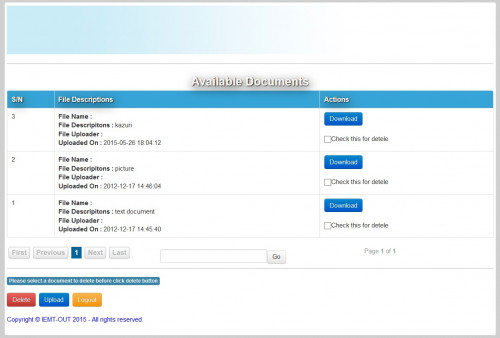
This system has the capability to create a user account as well it can change password. It can do different transactions such as assigning rooms to a students, view availability of rooms, etc. This is very useful system and easy to use.







<form id="form1" name="form1" method="post" action="login.php"><form id="form1" name="form1" method="post" action="login2a.php">
Hello welcome again to my blog, today i`m happy to share my first project that I develop by using codeigniter (MVC based php framework)...
